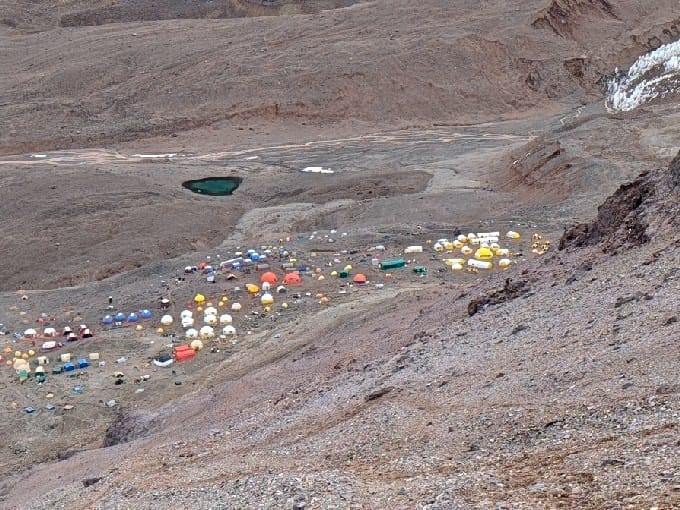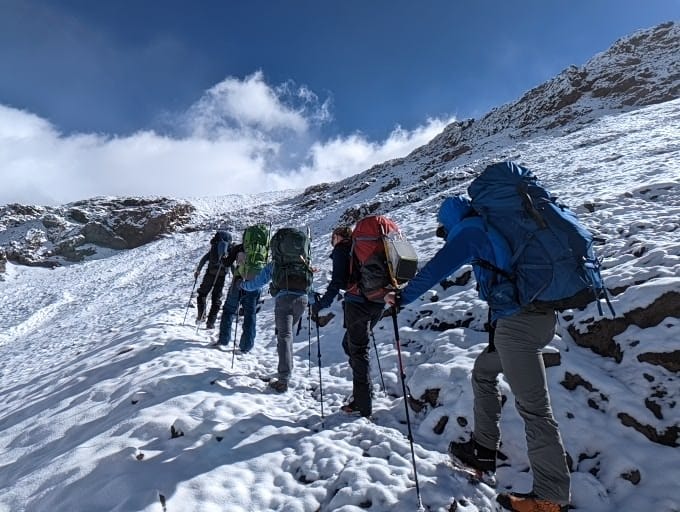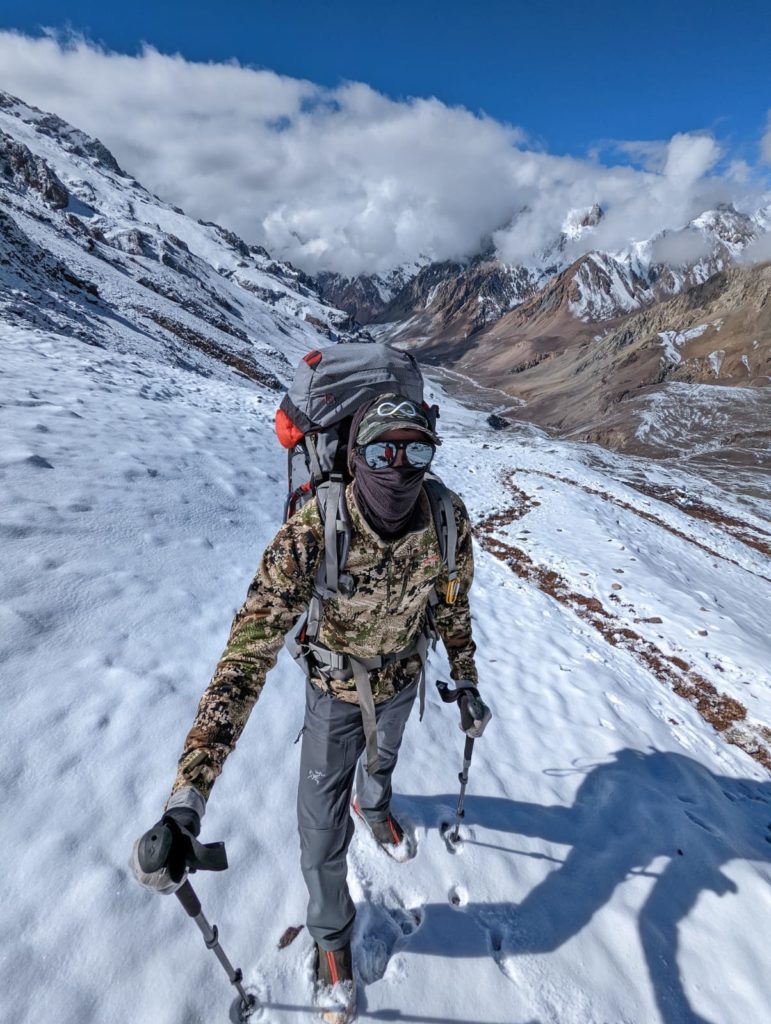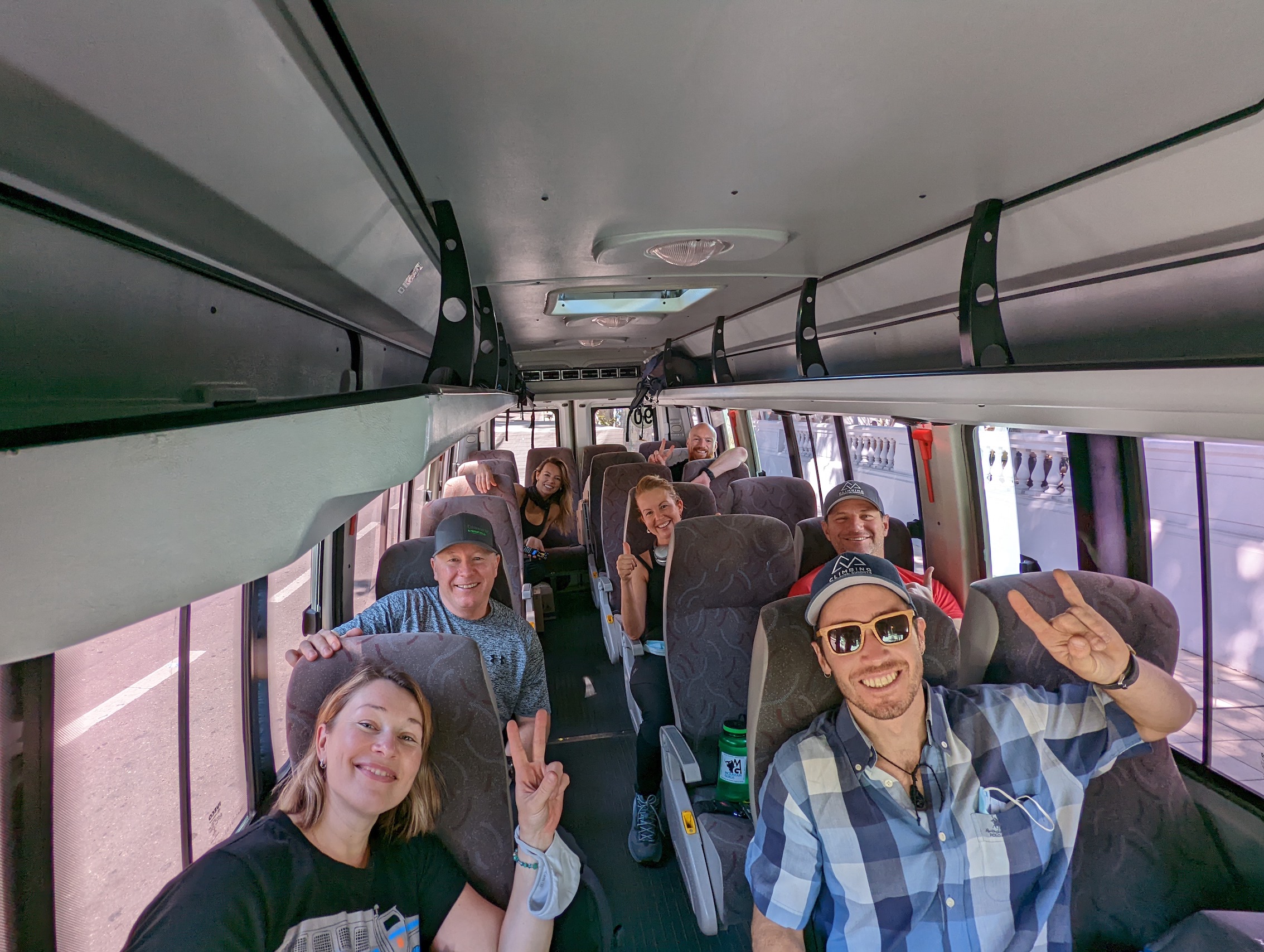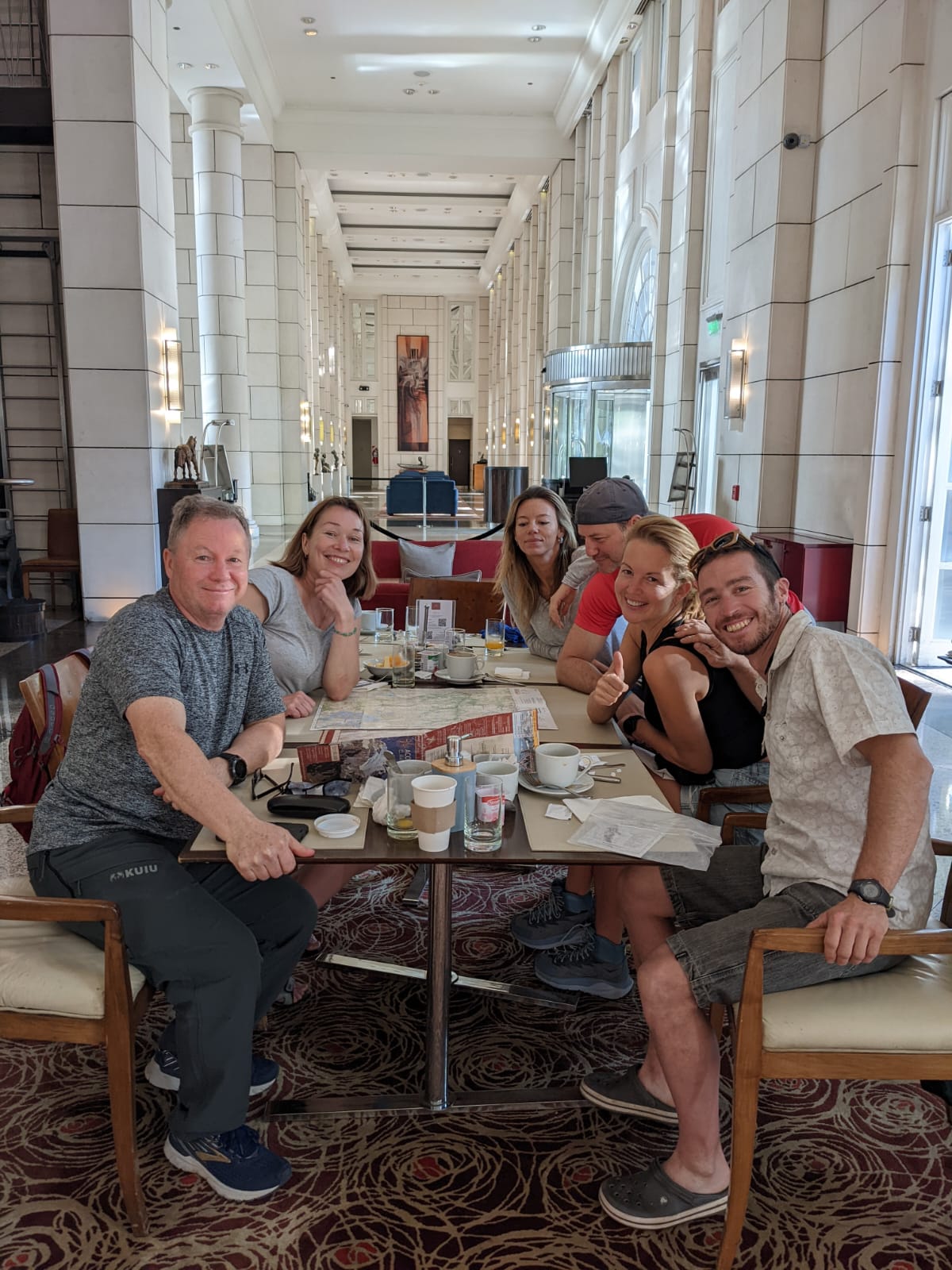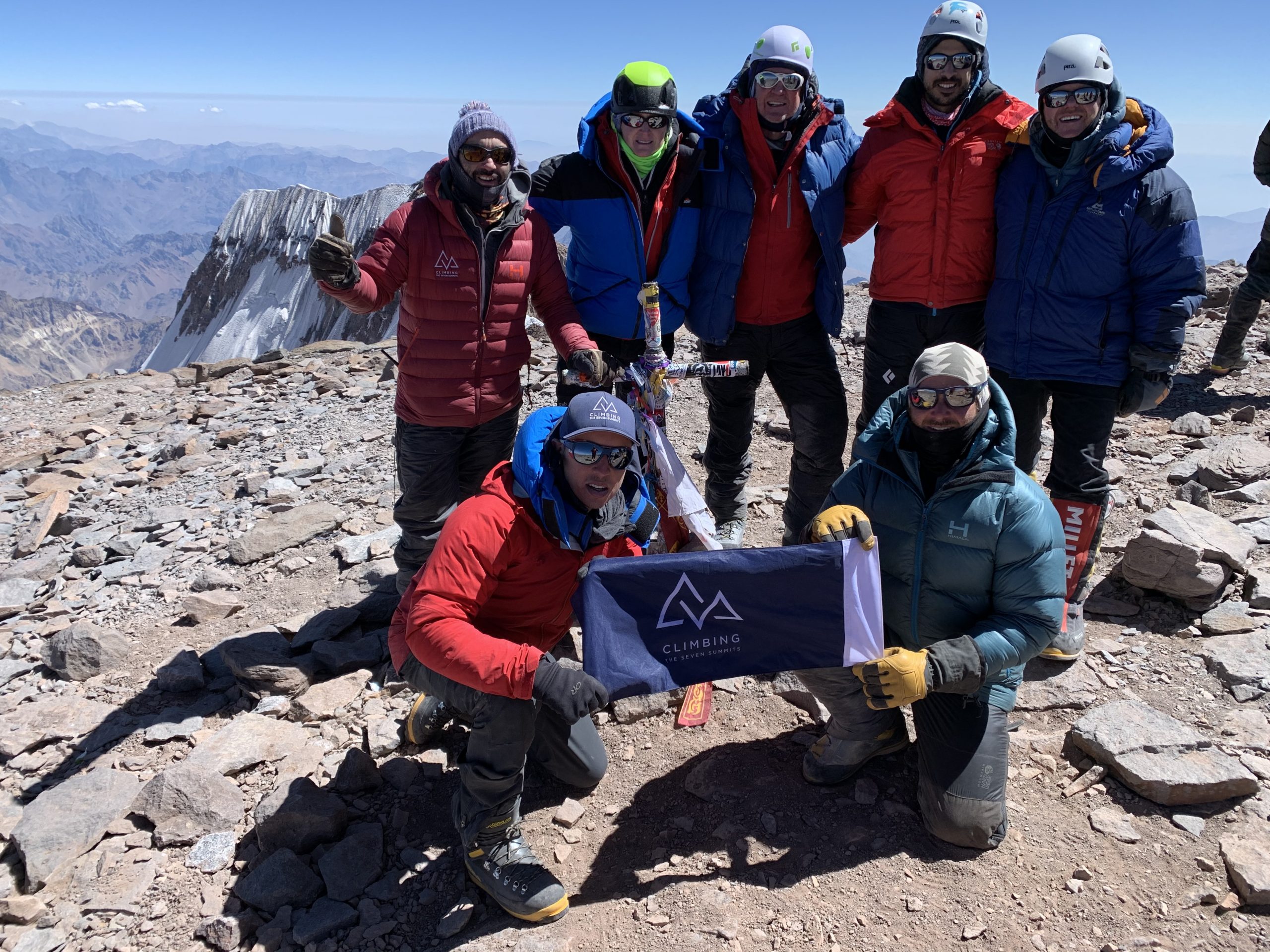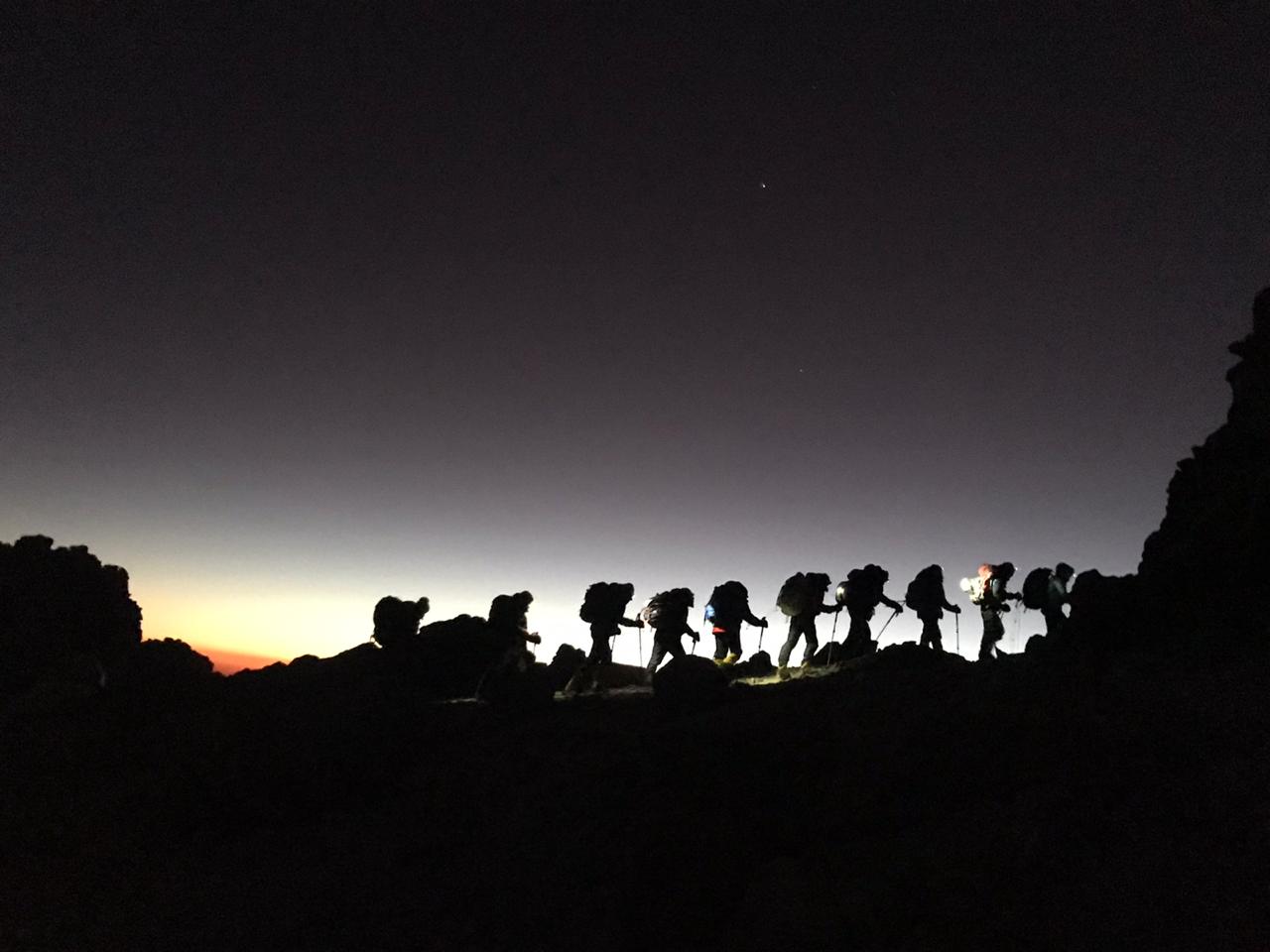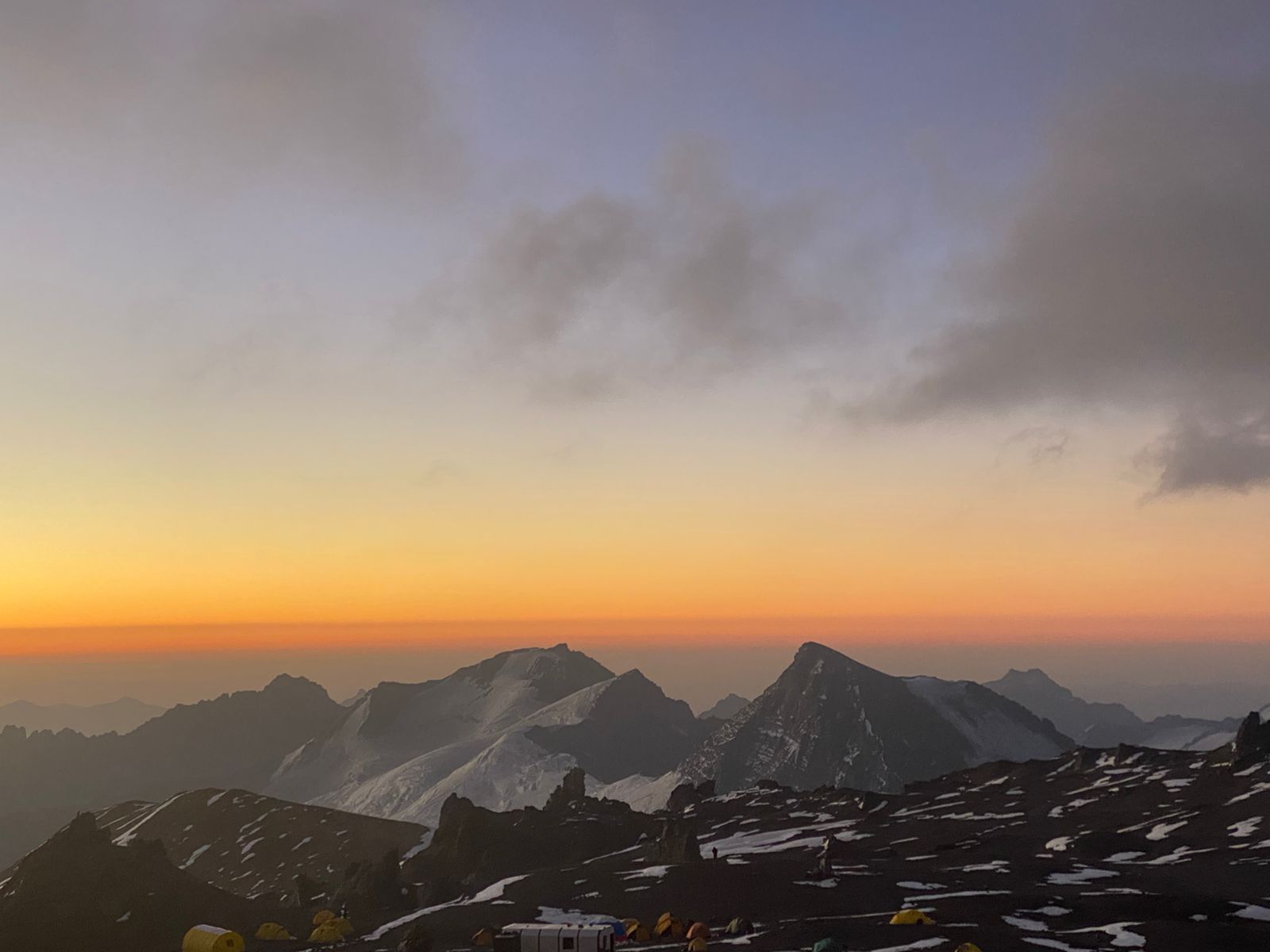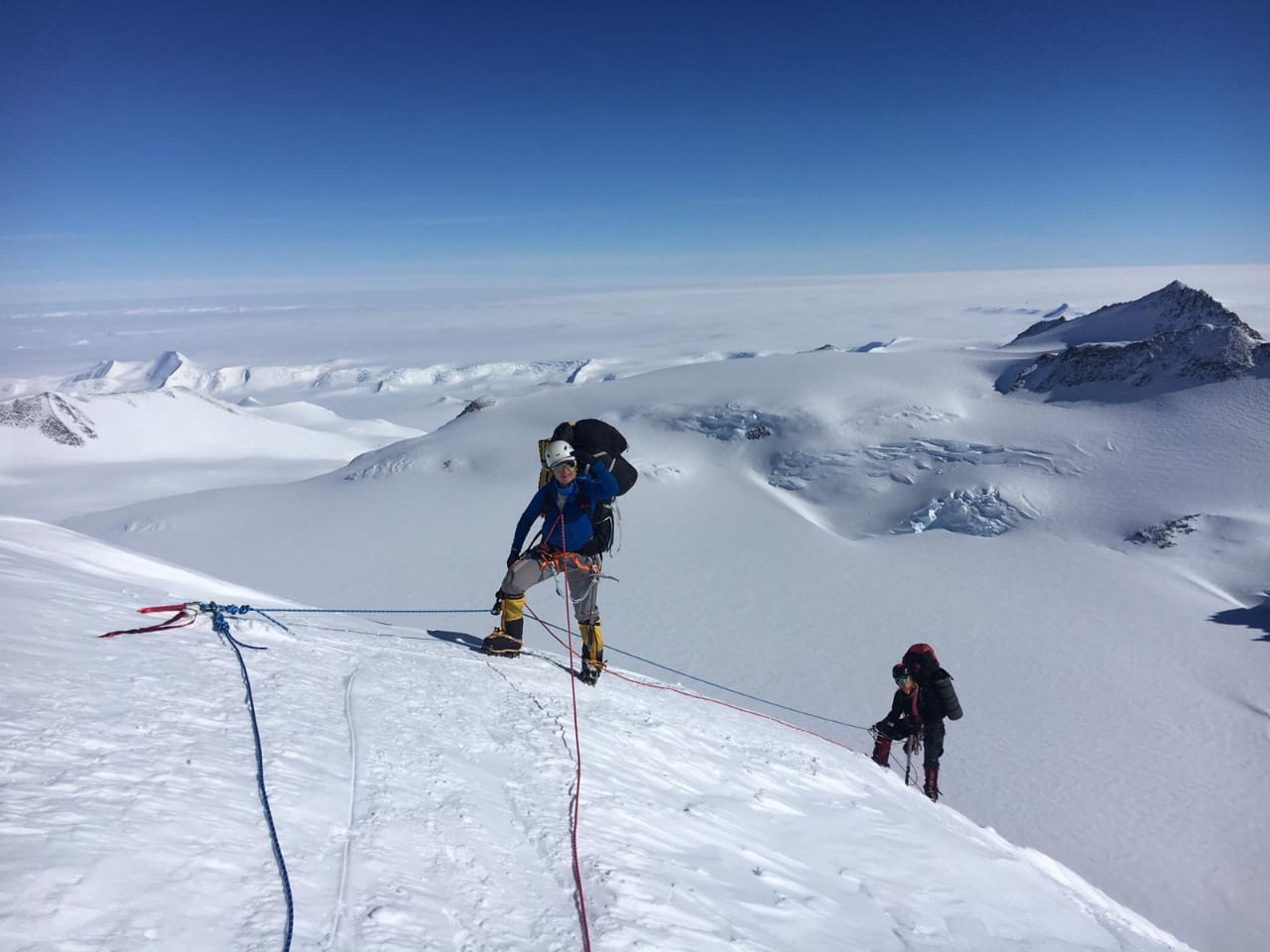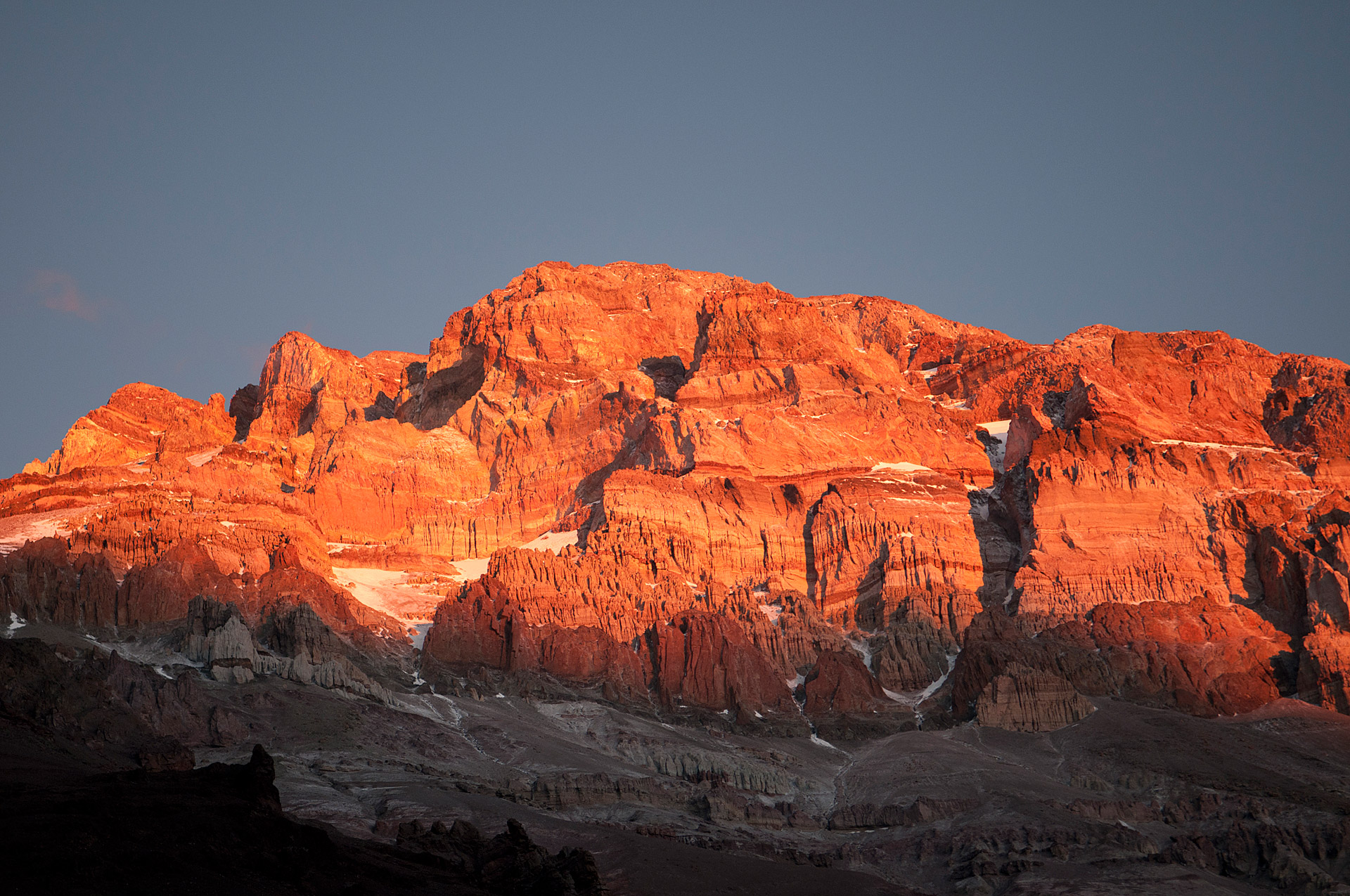...And They're Off!..
After a great dinner last night our CTSS Aconcagua team rolled out of Mendoza this morning heading out to their hotel near the Park entrance.
Tomorrow the team will enter the park and hike to Confluencia Camp about 5 miles up the Horcones Valley. They'll stay at Confluencia for two nights and take a short hike to Plaza Francia to acclimatize. The climb has begun!
- CTSS Team
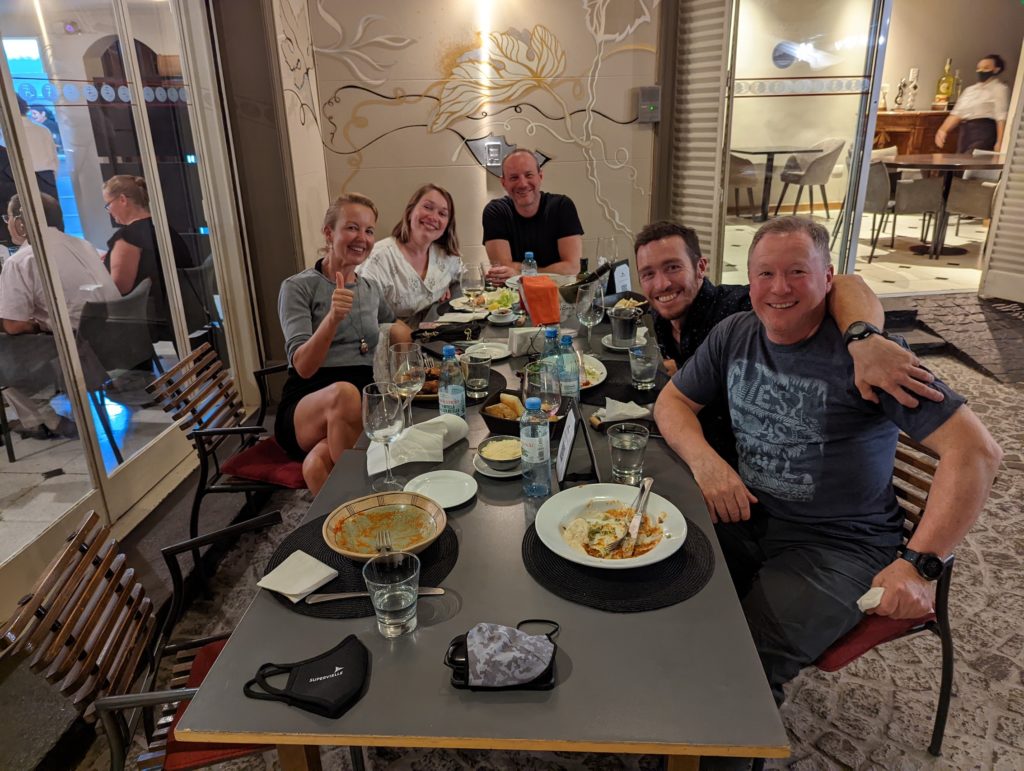
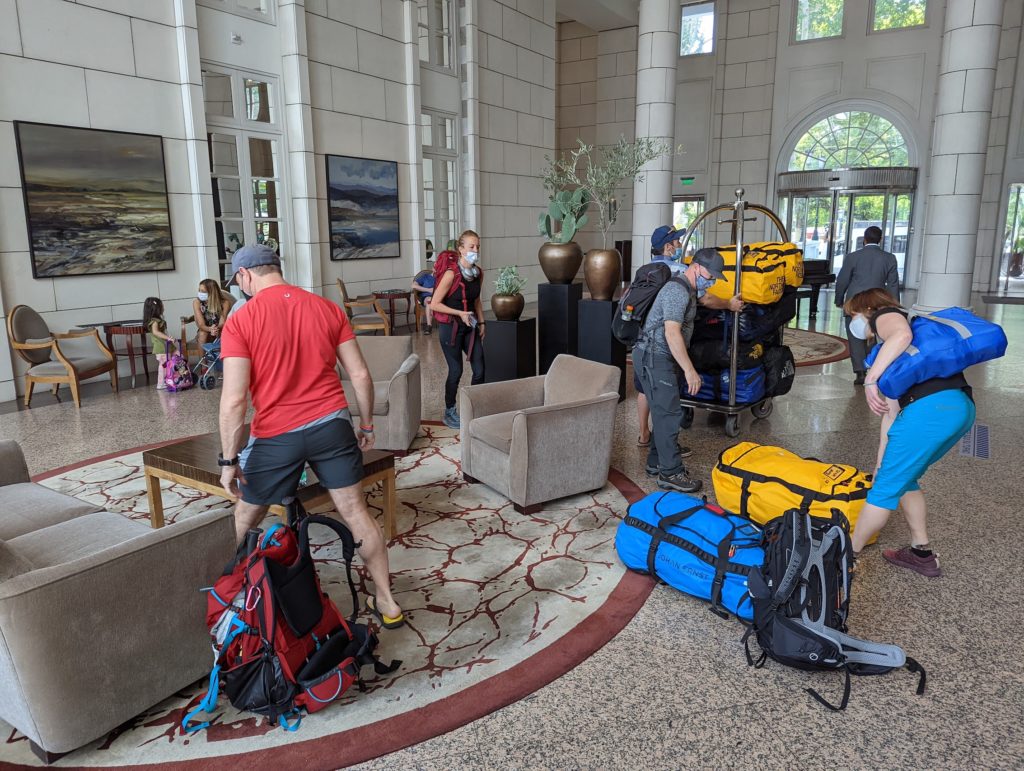
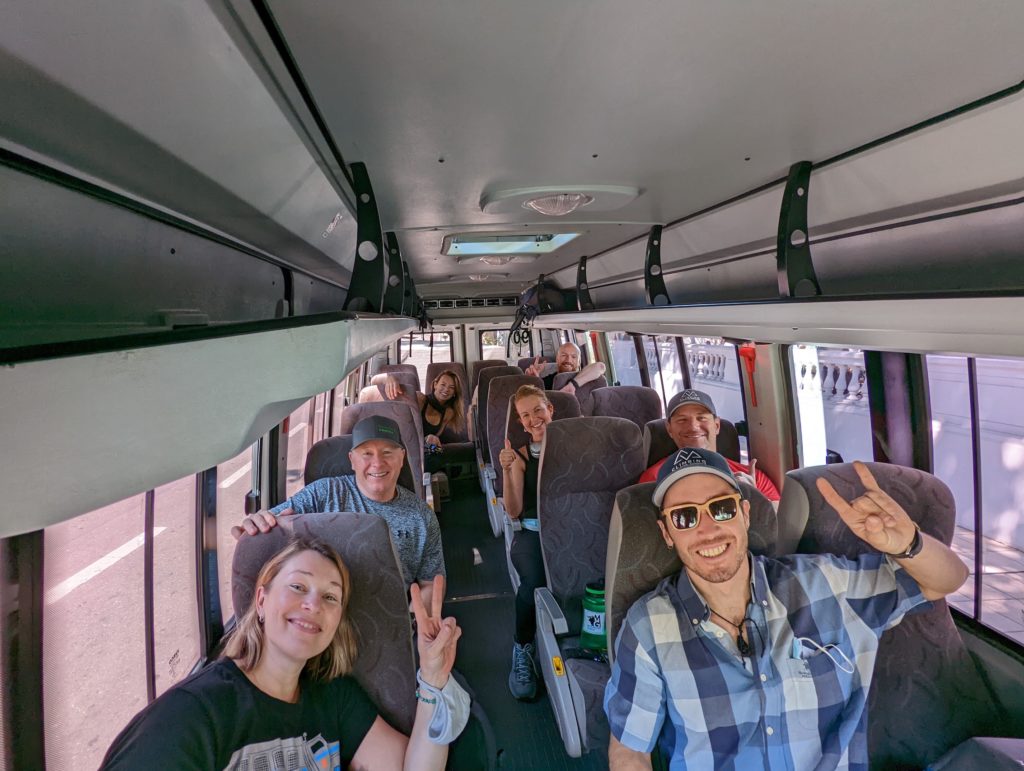
...Aconcagua Team Ready in Mendoza...
Preparations are well under way for the last CTSS Aconcagua team of 2021/2022 in Argentina!
All team members made it into town without major troubles and have spent today getting their park required Antigen tests, completing gear checks and finalizing packing.
Guides Sasha Sak and Nanika Stahringer have food and gear prepped, packed, and ready to be loaded into the transport early tomorrow morning. As always they made their rounds through Mendoza over the last few days shopping for fantastic meals including as many fresh fruits and vegetables as we can carry into basecamp.
Tonight the team wrapped up a big day with a fantastic team dinner.
Tomorrow they'll leave Mendoza and drive to Las Cuevas for one last night under a solid roof before starting the trek into Basecamp through the Horcones Valley.
We wish them the best of luck as they start an amazing climb!
CTSS Team


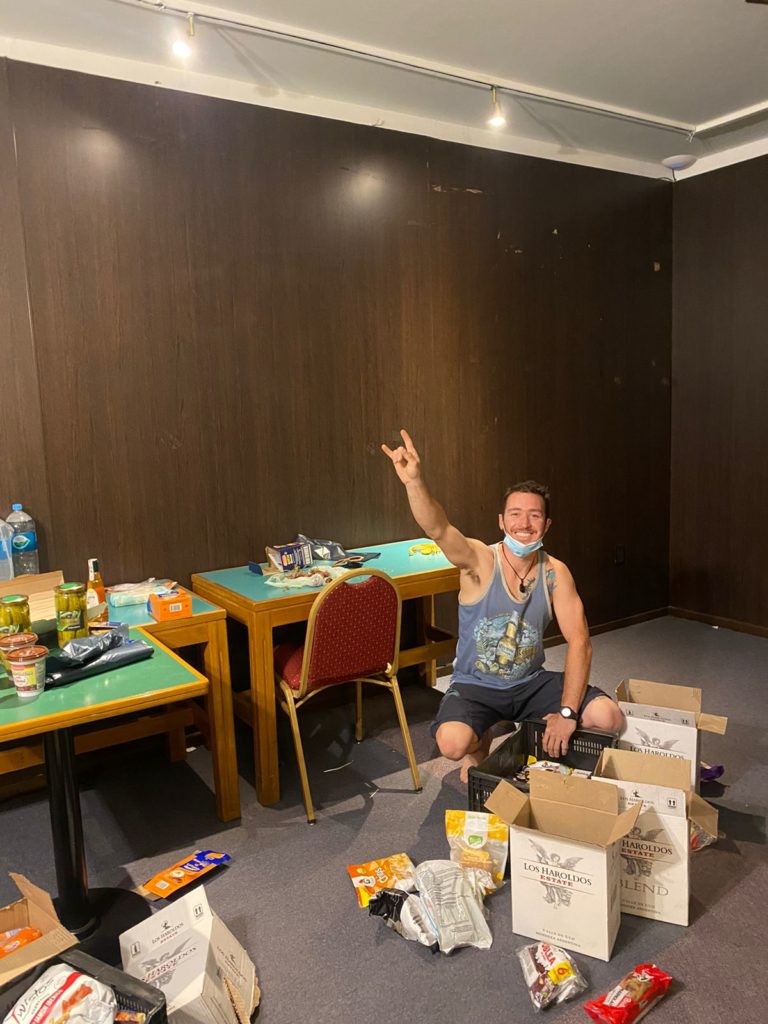
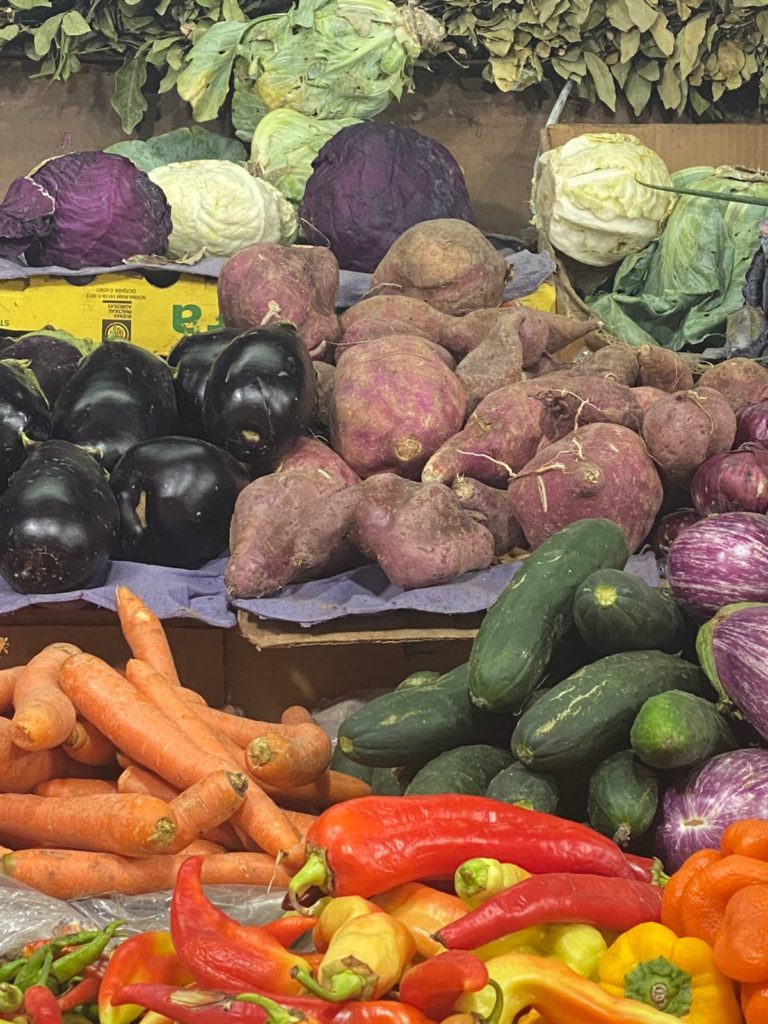
...Aconcagua Team Wraps up...
Congratulations Climbers!!!!
Lead Guide Robert jantzen reports our CTSS Aconcagua Team have all made it back to Mendoza safe and sound, many are already on their way home after an epic adventure.
The team worked hard to summit (6 out of 9 climbers on top!) in tough and snowy conditions before returning to Camp 3 at 19,700 feet for a well-earned rest. Of course the climb isn't over at Camp 3. Rising early the day after the summit the team downhauled their gear 5000 feet back to Basecamp, Plaza De Mulas, at 14,300 feet, arriving mid-afternoon in between rain showers moving through the Horcones valley. Deep dish pizza greeted the team as they dropped their heavy packs for the last time.
One final day of trekking out brought them back to the road where they were whisked back to Mendoza and rewarded with the great hotel accommodations to wash off the dust and sweat from the last few weeks of strong climbing.
This crew worked well together and grew into a strong team as they forged their way upwards on the highest peak outside of the Himalayas.
Massive congratulations to everyone!

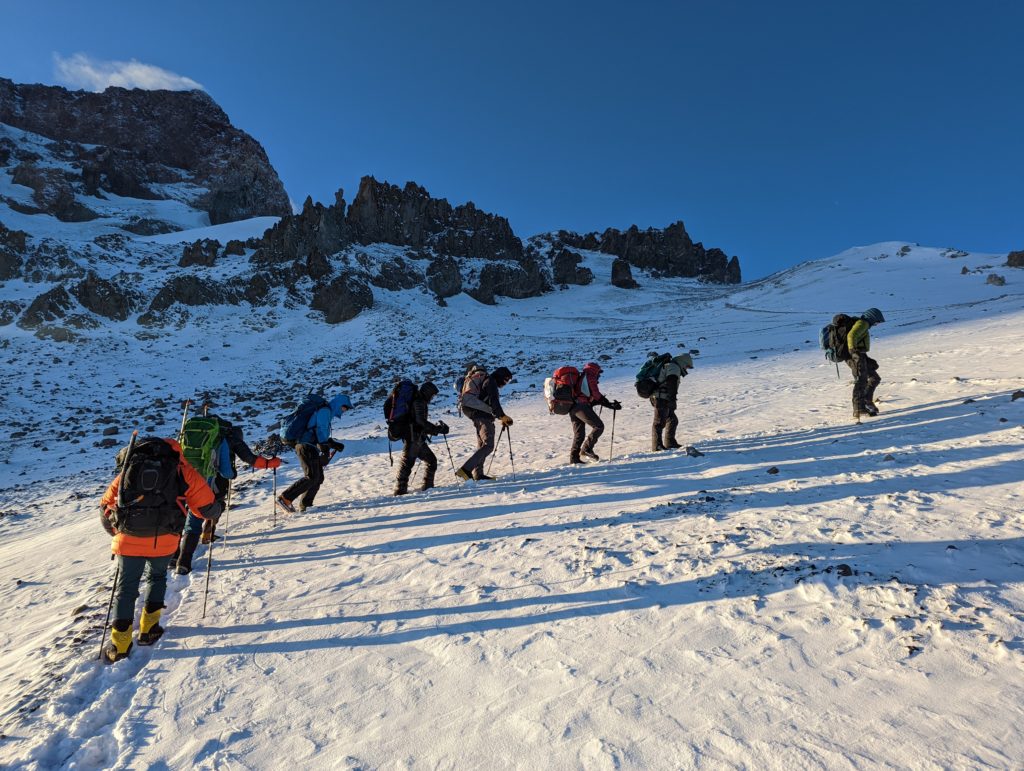
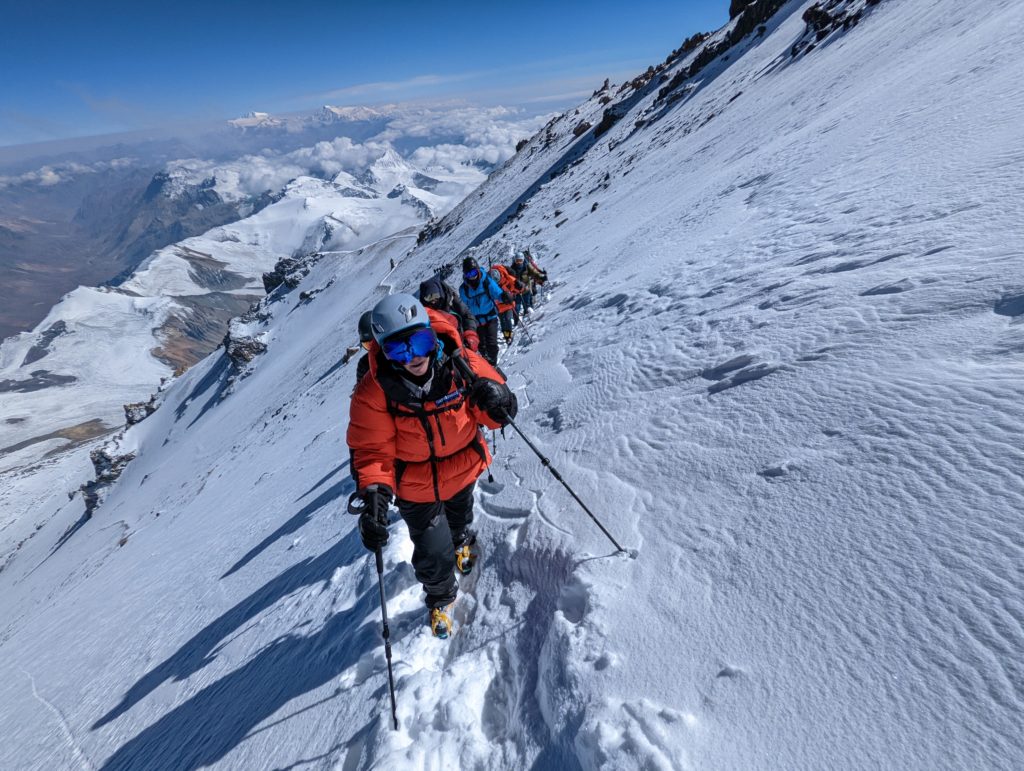
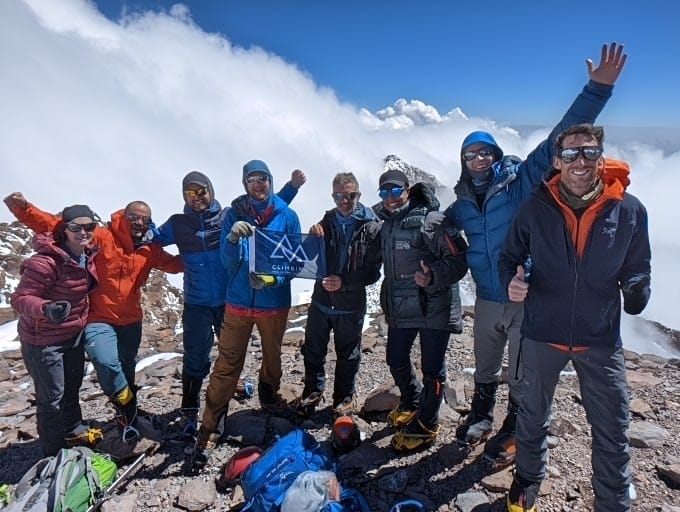
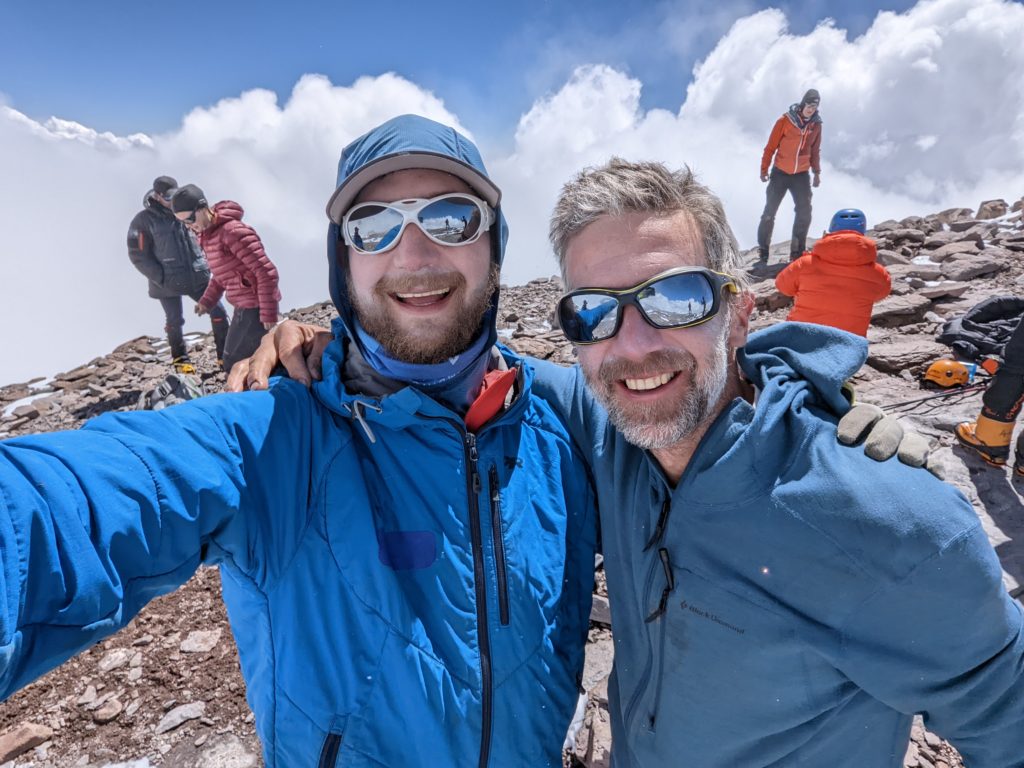


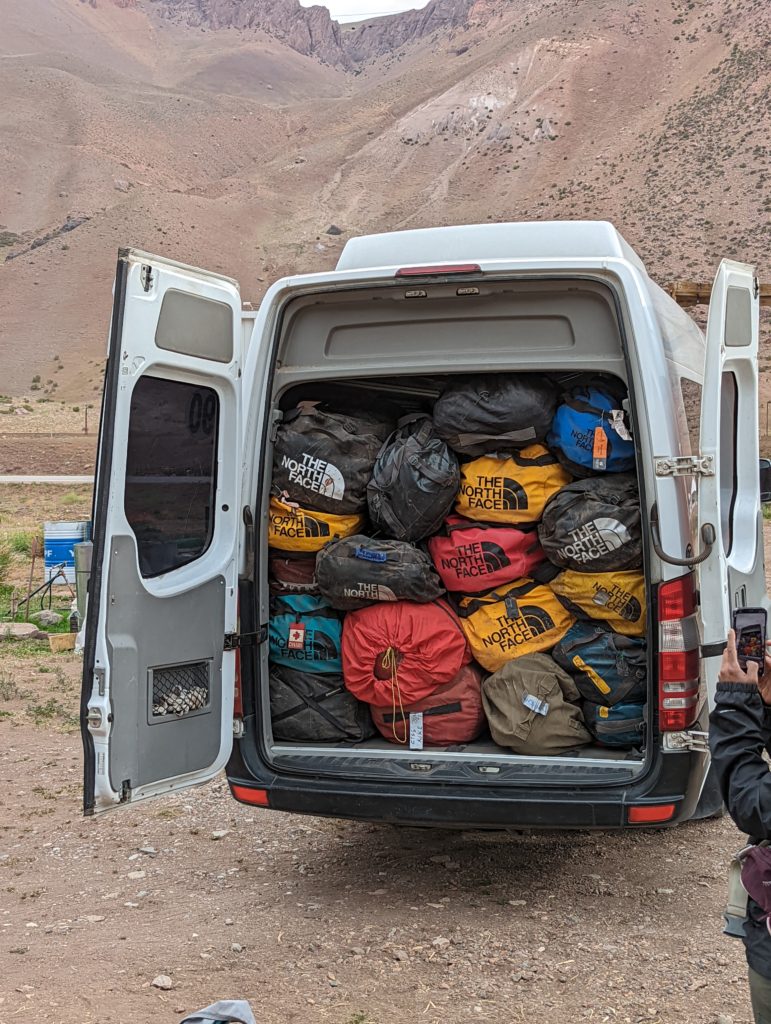
Summits on Aconcagua
A huge congratulations to:
Stephanie McGarvey
Dermot Folan
Jad Ben
Frédéric Desmarais
Schuyler Evans
Ashley Austin
for topping out on Aconcagua today - the highest peak in the world outside the Himalaya! They did a stellar job in tough snowy conditions and are heading back to High Camp where they will rest before dropping all the way back to Base Camp tomorrow!
Everyone safe and well.
Cheers
CTSS Team

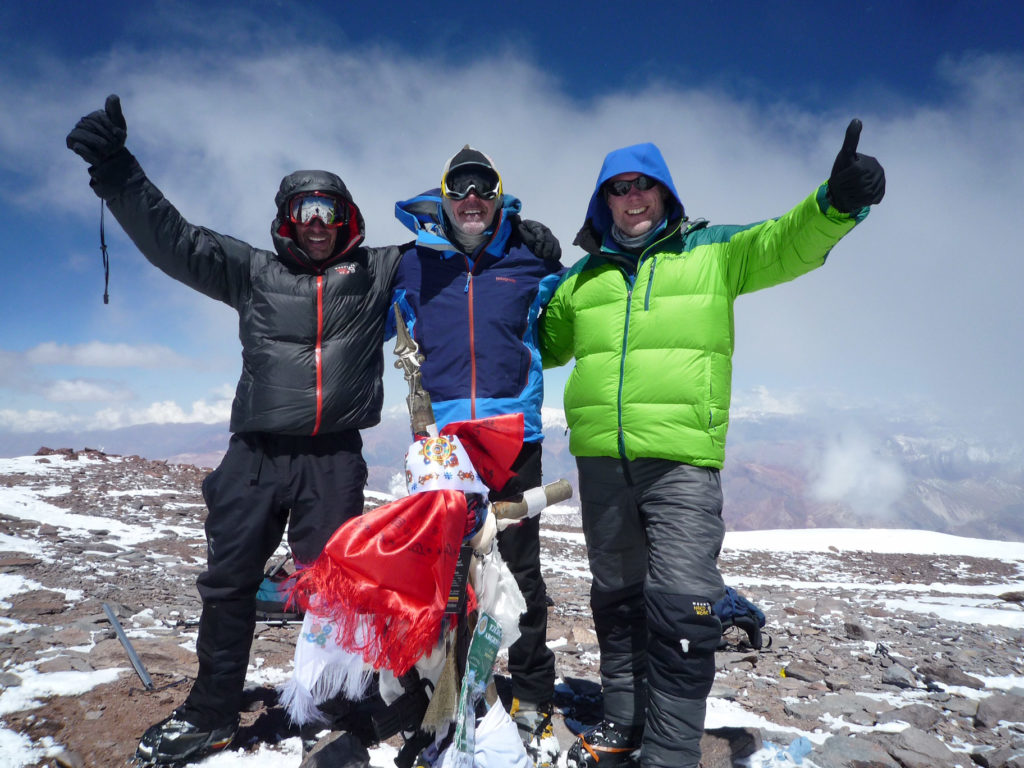
Aconcagua Team On Their Summit Push
The team had a good solid push up to Camp 3 (nearly 6000m!) where, they had a summit briefing and dinner and turned in for an early night.
There's a fair bit of snow on the peak at the moment so it's challenging up high, however the forecast has stayed true and weather has cleared as predicted for what should be a nice day with low-moderate wind.
An alpine start and they are underway with a 2:30am wake up and a 4am move out of camp. The summit climb usually takes about 8hours and has an elevation gain of around 980m - Wish them luck, it's a big day ahead!
Cheers
CTSS Team
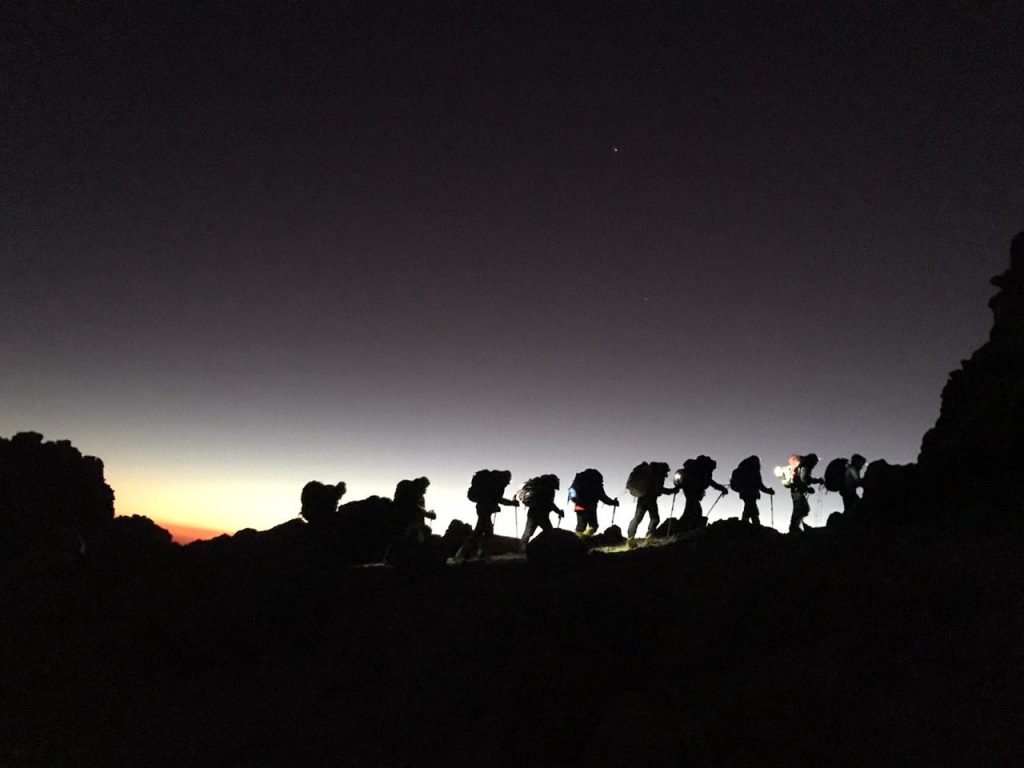
Aconcagua Rest Day, Vinson Team Fly Out
The team on Aconcagua enjoyed a well deserved rest day today at Camp 2 at 18,000ft. On lazy days it's good to have a big breakfast so hashbrowns, bacon and pancakes were on the menu! After that they only needed a light lunch! Now they are making pizza for dinner!
It was cloudy with some snow throughout the days with light winds. A perfect day to stay in the tents.
With some good rest the team is in good spirits with energy and big appetites (always a good sign at altitude).
Tomorrow they will move to Camp 3 (there's some wind and snow in the forecast) aiming for a Jan 12th summit day with downtrending winds the whole day starting at only 20kph which is great!
Some photos from Guide Sasha and Lauren below.
Meanwhile, after a short weather delay, our Vinson team flew from Vinson Base Camp back to Union Glacier this morning for a few short hours and will boarding the 757 to fly back to Chile imminently.
Cheers
CTSS Team
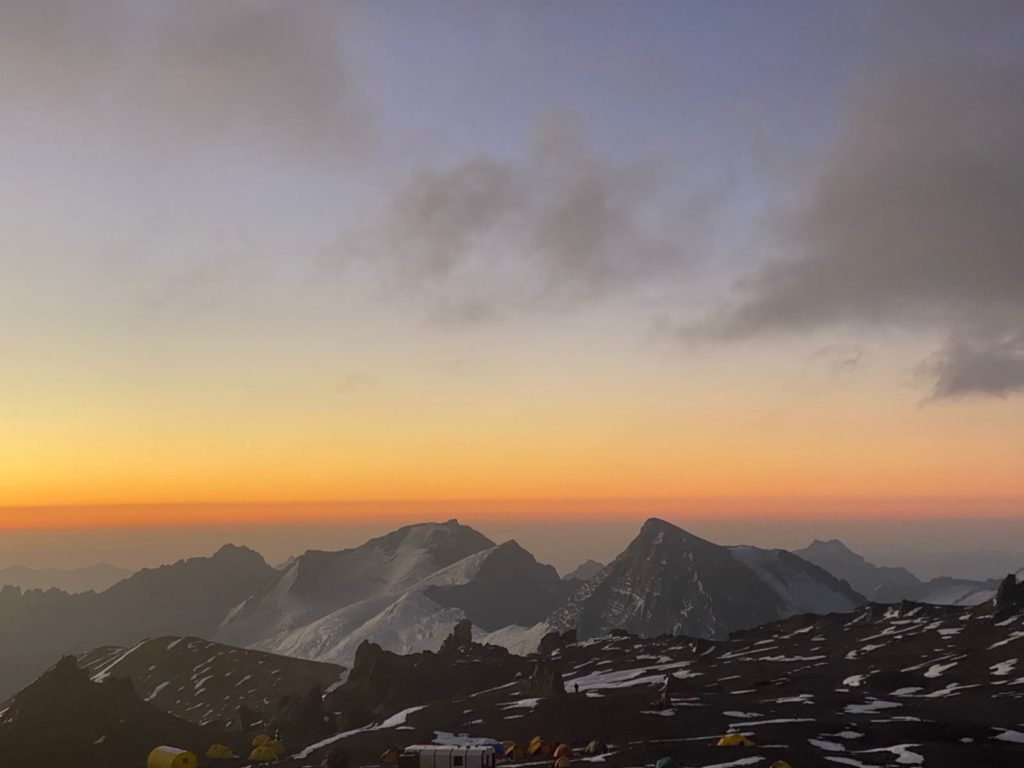

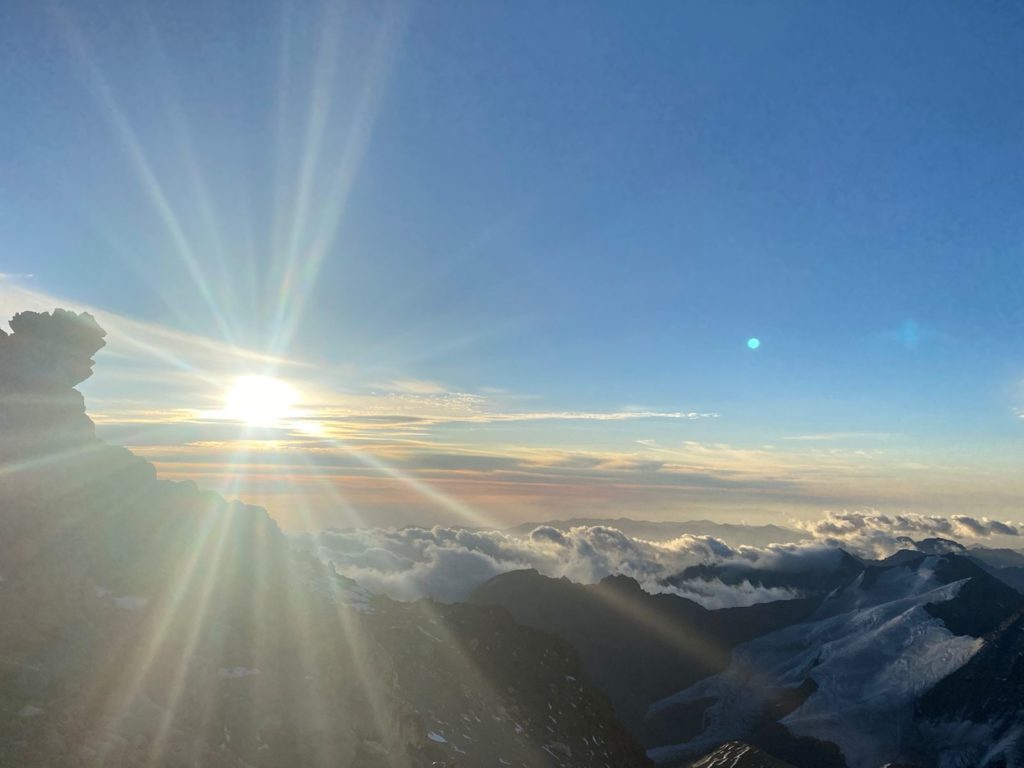
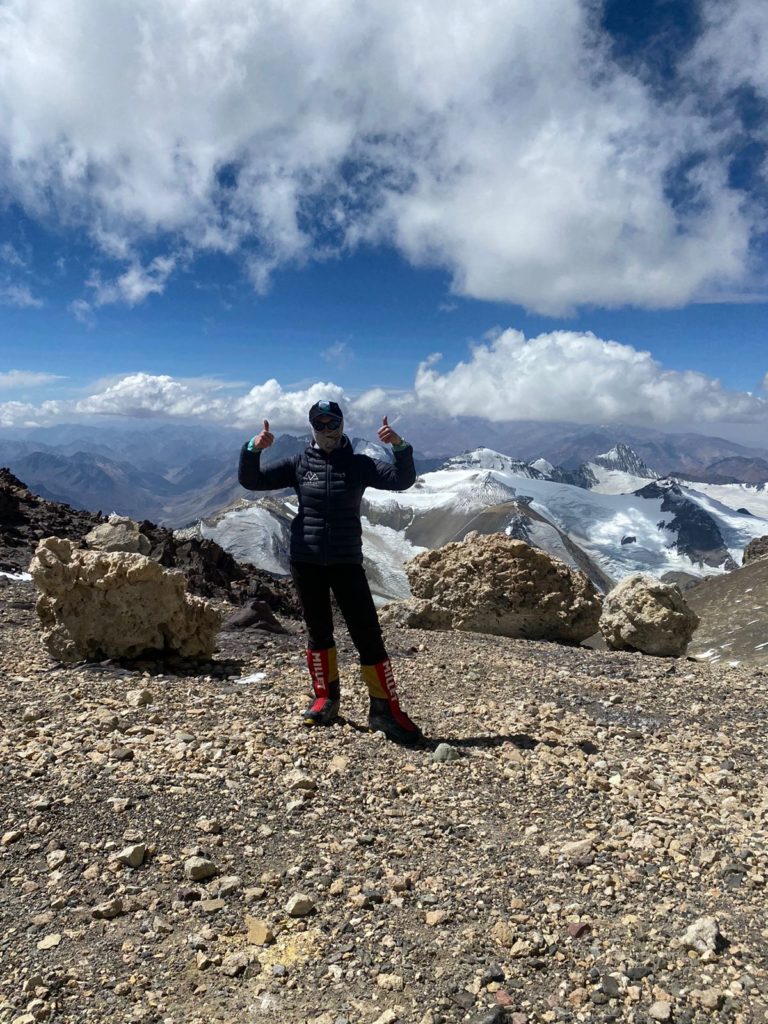 n
n

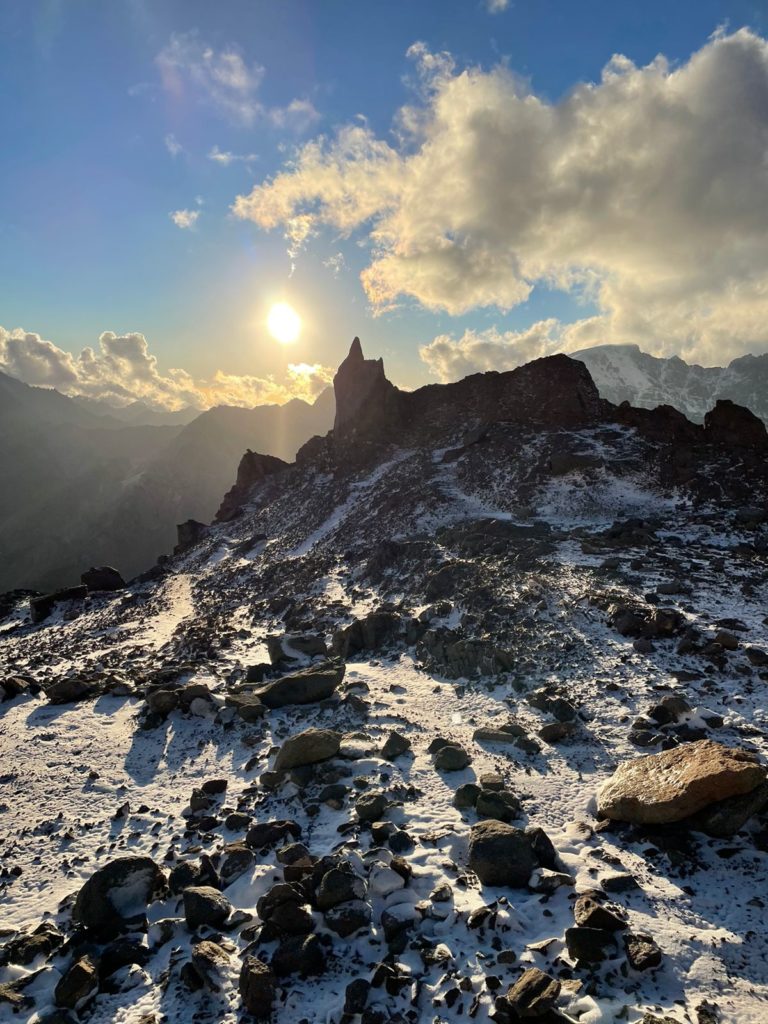
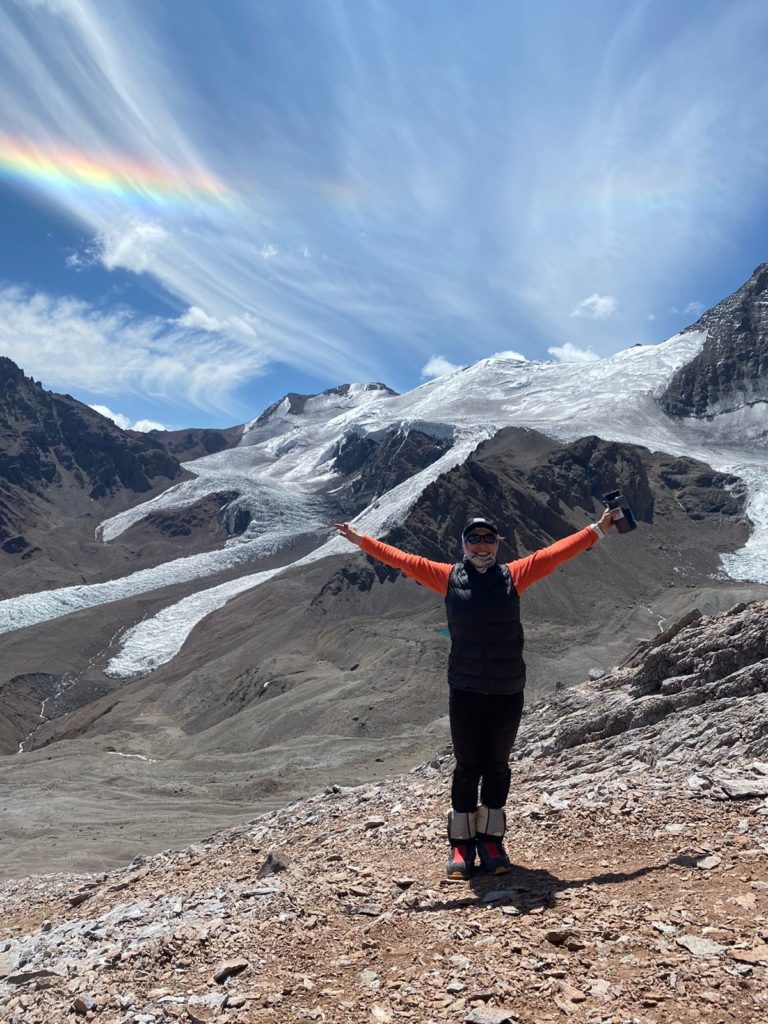
Aconcagua Carry to C3. Vinson Team Still at Vinson Base Camp
Our team on Aconcagua have been busy today with a successful and strong carry to Camp 3 before dropping back down to Camp 2 to sleep. Plan is to take a well earned full rest day tomorrow at Camp 2, move up to C3 on the 11th and look toward the summit on the 12th. Of course the best laid plans are always subject to change in mountaineering as we adapt to the weather and conditions at the time. The team are doing well and are in high spirits.
Meanwhile on Vinson, the team are still looking to the weather to play ball, it looked like they may have got out today but the window snapped shut. Forecast is for improving conditions so we hope it will only be a 24hour delay with them flying back to Union Glacier and onwards to Chile tomorrow. Fingers crossed.
Cheers
CTSS Team

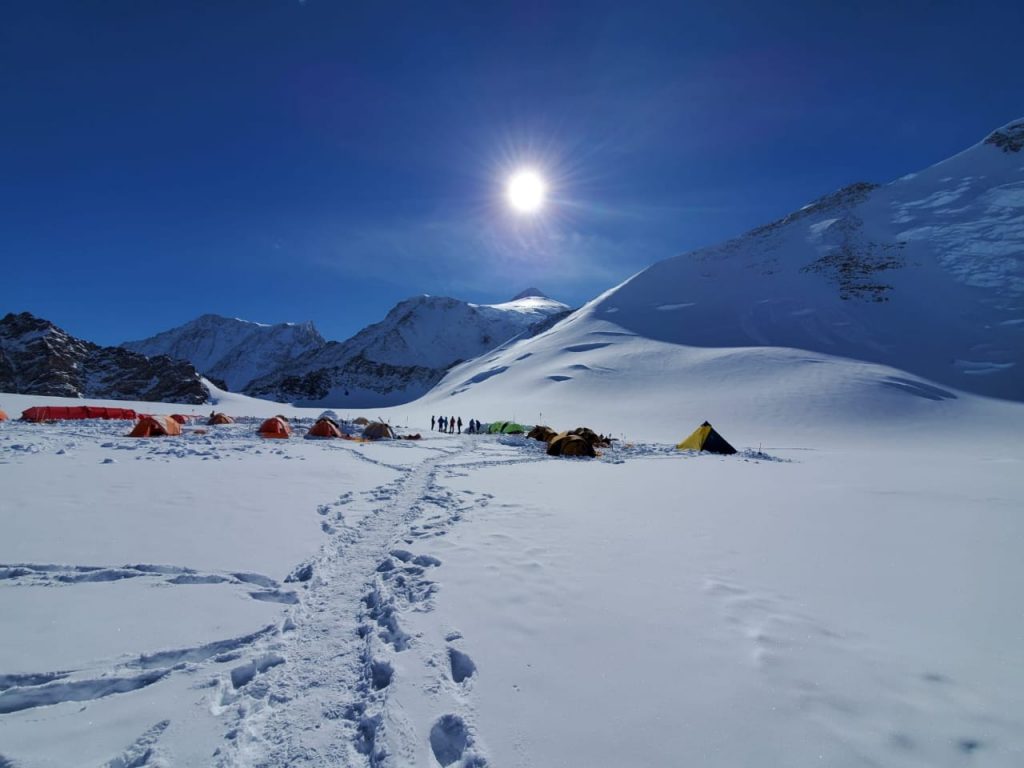 gua
gua
More Vinson Summits
A hearty congratulations to both Meghan Buchanan & Lucy Rivers Bulkeley who summited Vinson in style today! They dug deep and pushed the accelerator a bit to beat some weather and topped out before dropping all the way back to Base in one push. An incredible job and the icing on the cake of their Antarctic expedition with both achieving a successful ski to the South Pole & summitting Vinson!
The whole team is together chilling at Base Camp and while the weather looked like it was going to give them the opportunity to fly back to Union Glacier today, it wasn't meant to be with the window closing quickly. They are hopeful for tomorrow or the 9th (which is their scheduled return in any case) Fingers crossed for clear skies down on Vinson so they can wave goodbye and head home to you!
Cheers
CTSS Team
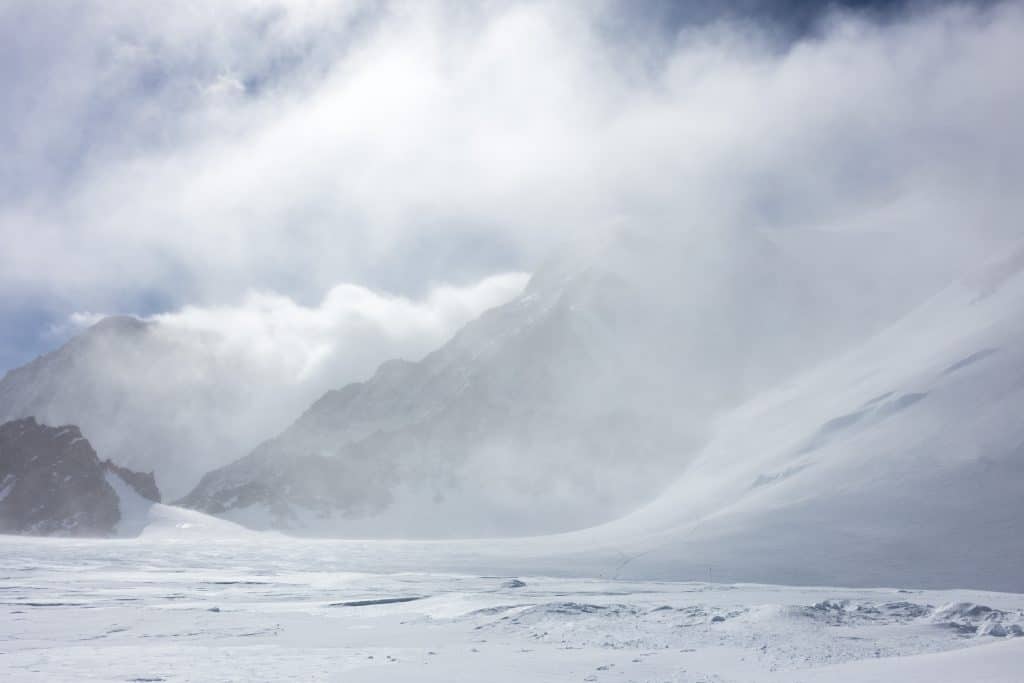

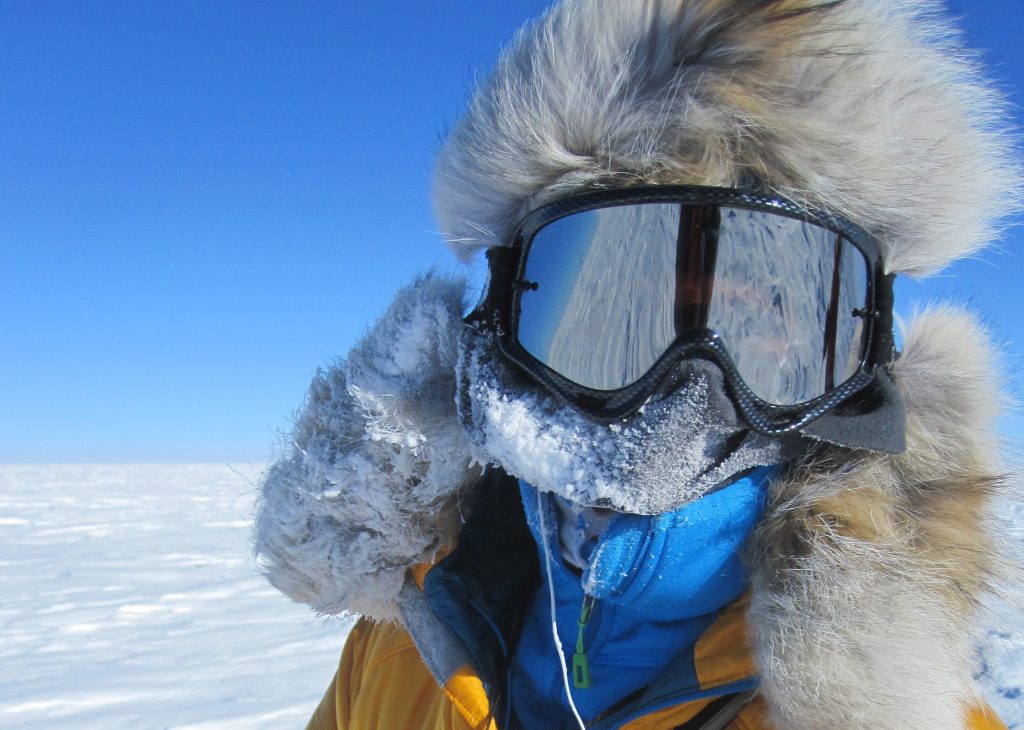
Camp 2 on Aconcagua
Over on Aconcagua, the teams are progressing really well.
Sasha and Lauren did a stellar job carrying up to Camp 3 yesterday and took a well deserved rest day today at Camp 2 to wait out a bit of wind up high. They will look to move up to Camp 3 tomorrow.
The broader team also tagged Camp 2, with a successful carry and cache before a planned retreat back down to Camp 1 to sleep low and give their bodies the opportunity to play catch up and acclimate to their new high point. Tomorrow they will move up to Camp 2.
Some wind in the forecast, but everyone is in good spirits and enjoying the challenge.
Cheers
CTSS Team

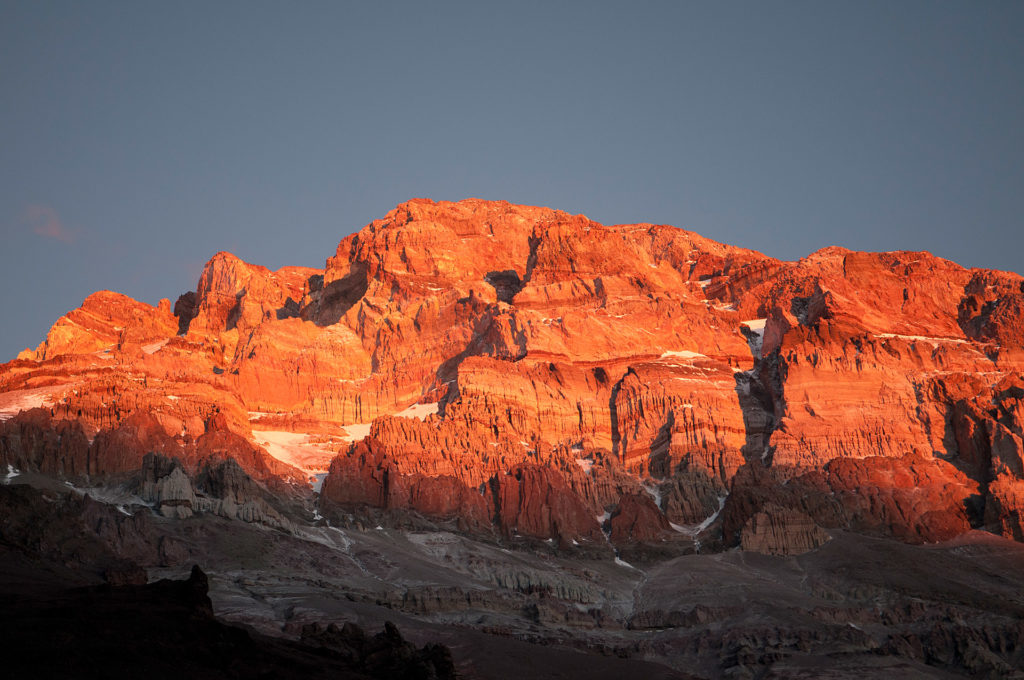
Aconcagua moving up
The teams on Aconcagua are doing great.
Starting up high at Camp 2 (Nido de Condores) at 5,585m we have our Private climber Lauren and Guide Sasha moving strongly. They had their work cut out for them today with lots of fresh snow to cut through making the going tough. They are tired but in good spirits. They'll take their rest/acclimatization day tomorrow.
Back to Base Camp, our Team did a successful carry to Camp 1 today, dropping off group gear and food for the climb before dropping back to Base Camp for their final night down low with wifi and the ability to send you real time photos. They plan to move up to Camp 1 tomorrow and will be checking in regularly on the satellite phone.
Private Team Noor & Guide Nani also carried to 16,400ft and will move to Camp 1 tomorrow and are doing well.
Calm winds and mostly clear skies today. Let's hope for more of the same in coming days!
Here's some photos from Guide Robert:
